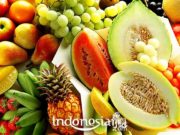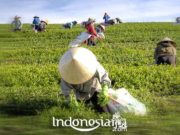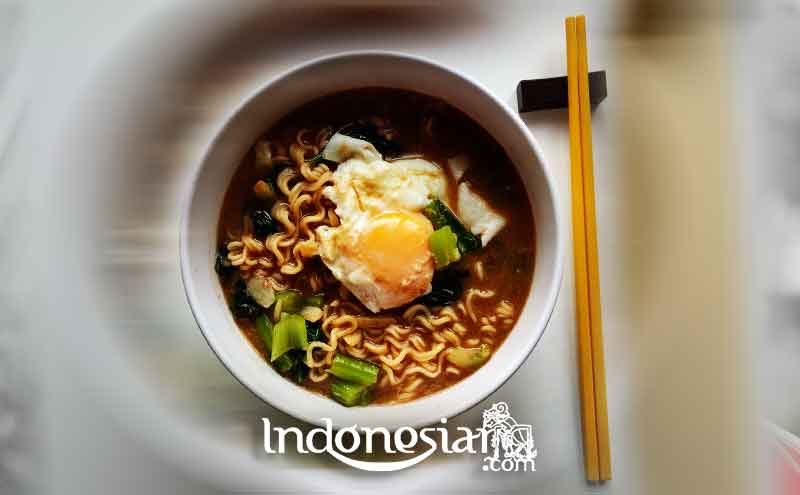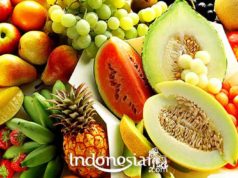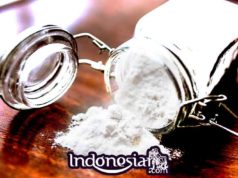Indonesia is indeed famous for its culture, including its culinary delights. One of them is like a typical Dayak food in Kalimantan. The typical Dayak food is quite famous for its taste. Check out some of the following popular Dayak dishes.
1. Juhu Singkah
Juhu singkah is a dish made from young rattan spices which is cooked with baung fish and sour eggplants as well as various spices and coconut milk. Umbut rattan in the Dayak Maanyan language is called uwut nang’e, while in the Dayak language Ngaju is known as juhu singkah. Rattan used as a material to make jingkingkingkah rattan is still young. Before cooking, the spines that surround the rattan stem must be cleaned first.
Next, the rattan skin is cleaned and cut in small sizes. After that it is cooked with various herbs and spices typical of the archipelago. The taste of jugu singkah is somewhat unique and distinctive because the taste is savory, sour, spicy, sweet and bitter mixed. Juhu is often found in Central Kalimantan, Palangkaraya. Dayak tribesmen in West Kalimantan in general also often make this delicious culinary.
2. Bangamat
Bangamat or paing made from large bat meat / bats. The meat of the bat which is about to be cooked over the cleaning process first. Typically, Bangamat is cooked with mixed vegetable liver from banana stems or tendrils. Not all types of bats are made in this dish.
Insectivorous and bloodsucking bats are not used as ingredients to make bangmat, but only fruit-eating bats. Bangamat processing is usually different in each Dayak tribe. Like Dayak Ngaju who cook Bangamat (Paing) using more seasonings than Bangamat processed from Dayak Maanyan.
This culinary is said to have many benefits because it is made from bat meat. Bat meat is known to be efficacious to improve fitness and stamina, cure asthma, as well as, cure itching. Although this has not been scientifically proven until now, many people still believe that bat meat has many health benefits.
3. Noni Botok
Botok / bothok is a typical food from the Java region which was originally made from coconut pulp (cake) which has taken the juice (coconut milk). Initially, botok from coconut pulp only seasoned with chili, salt, pepper, and bay leaf. Next, it is wrapped using banana leaves and steamed hot steam until cooked.
Along with the development of Indonesian cuisine, botok has been modified using ingredients such as Chinese petai, tofu, anchovies, shrimp to wasps. Apparently, the Dayak tribe also has a fairly famous typical botok. Botok is made from noni leaves. Noni leaf botok is mixed with tuna or other fish according to taste like lais and baung fish.
How to cook Noni botok is quite easy. Noni leaf bones are discarded after being washed clean, then sliced. After that, the noni leaves should be boiled twice to remove the bitter taste. Noni leaves that have been boiled and thrown away, are then cooked by mixing herbs, coconut milk and fish.
4. Wadi
Dayak tribes who live in South Barito District, Central Kalimantan Province have a hereditary habit of processing food called wadi. Wadi means fermentation. Wadi is a strategy of the local community to regulate eating patterns and serve as food reserves when the community is busy with farming or harvesting rice.
Food that has been processed into wadi is stored in balanai (pot) to be taken to the fields or to the garden during the growing season. In general, wadis are made from various types of fish and wild boar meat. The processing process uses spices made from white glutinous rice or corn kernels that are roasted until browned, then coarsely ground.
Fish or pork are stirred with salt and allowed to stand for about one hour. After that, the wadi is washed thoroughly, mixed with the seasoned spices (sa’mu / kenta). According to the local Dayak community, a pot to store wadis should be given several pieces of jackfruit leaves at the top to prevent the wadi from becoming rotten and wavy.
The pot must also be tightly closed. Although making it looks easy, but if there is a slight mistake in entering the spices and at the time of immersion, it can make the wadi no longer tasty or even cannot be consumed. Food processing into wadi is a form of local wisdom of Dayak residents in the face of famine or fish season. Salting or wadi fermentation process functions to inhibit the growth of harmful bacteria. Through this method, fish are not damaged by decay even if stored for a relatively long time.
So, have you tried the culinary specialties of Dayak? If you are curious to try it out, you should prepare your trip to Kalimantan for your trip!




